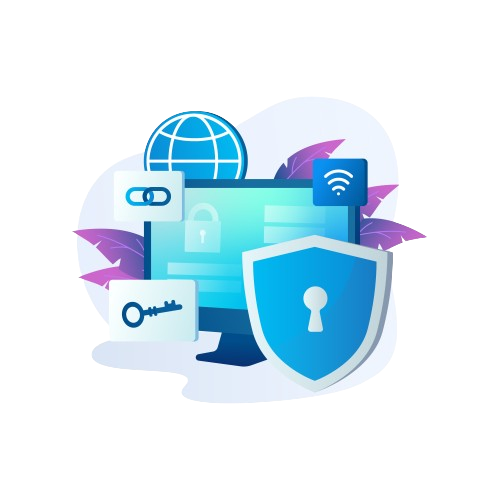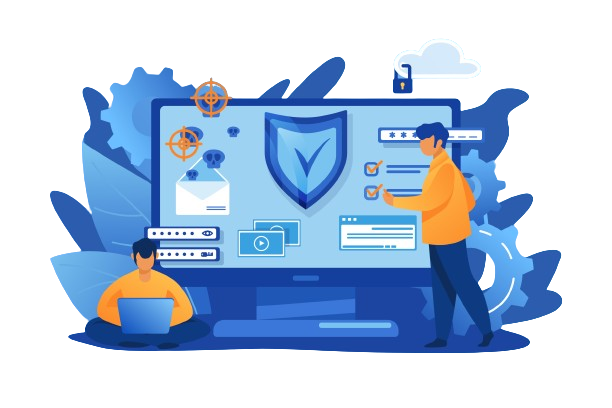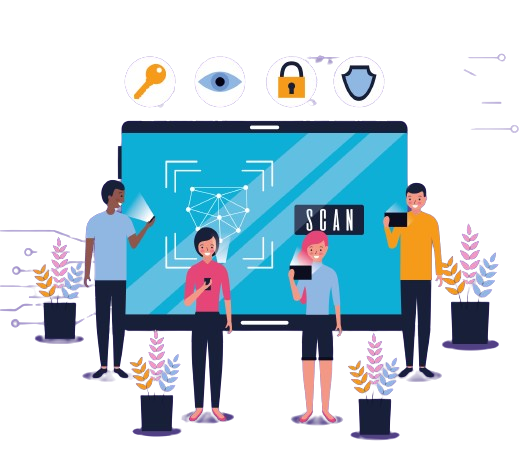
In a generation ruled by way of technological advancements, the healthcare enterprise unearths itself at the crossroads of innovation and vulnerability. As healthcare agencies more and more include virtual answers for affected men or women care and facts manipulation, they face a growing array of cybersecurity-demanding situations. This weblog explores the top ten demanding situations encountered via way of the healthcare sector in safeguarding touchy facts and ensuring the confidentiality, integrity, and availability of vital facts.
What is Cybersecurity?
Cybersecurity refers to the practice of protecting laptop structures, networks, and virtual information from theft, damage, unauthorized access, or any form of cyber attack. It carries a large range of generation, techniques, and practices designed to shield information-technology (IT) systems and ensure the confidentiality, integrity, and availability of records.
Key Elements
1. Protection from Unauthorized Access: This involves imposing measures to save unauthorized individuals or entities from getting access to sensitive information or laptop systems. This includes using robust authentication strategies, access controls, and encryption.
2. Data Encryption: The method of changing facts properly right into a code to prevent unauthorized entry. Even if a hacker manages to get entry to the facts, they would not be able to recognize it without the decryption key.
3. Firewalls and Network Security: Firewalls act as a barrier between a constant inner community and untrusted external networks, tracking and controlling incoming and outgoing network web page visitors. Network protection capabilities assist in guarding the integrity and confidentiality of information as it’s miles transmitted across networks.
4. Malware Protection: Protection against malicious software packages or malware, which includes viruses, worms, ransomware, and adware. Antivirus programs and one-of-a-kind safety answers are used to hit upon and remove or quarantine such threats.
5. Security Audits and Monitoring: Regularly assessing and tracking IT structures for vulnerabilities and ability safety breaches. This consists of reading device logs, tracking user sports activities, and carrying out safety audits to perceive and cope with weaknesses.
6. Incident Response and Recovery: Establishing plans and techniques to reply to and recover from cybersecurity incidents. This entails figuring out the nature of the incident, containing the damage, and restoring ordinary operations as speedily as possible.
7. User Education and Training: Educating clients about cybersecurity practices to lessen the hazard of human errors, inclusive falling sufferer to phishing assaults or using vulnerable passwords.
8. Endpoint Security: Protecting character devices (endpoints), inclusive of computers, laptops, and cellular gadgets, from safety threats. This may additionally incorporate the usage of antivirus software, (endpoint detection and response) EDR solutions, and cellular device management (MDM) systems.
9. Application Security: Ensuring that software applications are designed, superior, and deployed securely to save you vulnerabilities that attackers ought to exploit.
10. Cloud Security: Implementing protection features to guard statistics stored in cloud environments, which includes steady configurations, statistics encryption, and entry to controls.
Cybersecurity is a dynamic and evolving place, as cyber threats continuously adapt and emerge as extra modern-day. Organizations and people alike need to live vigilantly, update their safety capabilities frequently, and adapt to rising cybersecurity challenges to hold robust protection against cyber threats.
Challenges for Cybersecurity in the Healthcare Industry
Insufficient Staff Training
An inadequate frame of employees’ schooling is an important cybersecurity challenge, mainly in the healthcare region. Without whole training, personnel may additionally lack the records to pick out and respond to capacity cyber threats. Inadequate training will boost the chance of protection breaches, record leaks, and compromised private statistics.
Establishing regular and thorough education programs is crucial to instilling a cybersecurity-conscious lifestyle, making sure that employee members are prepared to apprehend, prevent, and address evolving cyber threats successfully.
Data Encryption and Protection
Data Encryption and Protection are crucial components of cybersecurity, safeguarding touchy data from unauthorized access. Encryption includes converting information right into a strong code, ensuring that although intercepted, it stays indecipherable without the right decryption key.
This vital safety degree is hired to protect distinct facts, along with non-public information, financial data, and sensitive communications, fortifying the integrity and confidentiality of digital property in an ever-evolving cyber panorama.
Legacy Systems and Outdated Infrastructure
Legacy systems and outdated infrastructure pose great annoying situations in the ever-evolving panorama of technology. These developing older technologies lack the strong safety functions essential to face up to trendy-day cyber threats, making them susceptible to assaults.
Updating and modernizing infrastructure is critical to decorating resilience, enhancing efficiency, and ensuring the stable processing of statistics. Neglecting this crucial factor can divulge businesses to extended cybersecurity risks, hindering their capability to conform to new technology and leaving them liable to capability breaches and record compromises.
Interconnected Medical Devices
Interconnected clinical gadgets, a crucial component of present-day healthcare, communicate approximately the networked integration of medical devices and structures. From pacemakers to infusion pumps, these devices trade records to decorate affected individual care and streamline medical approaches.
However, their connectivity poses cybersecurity-annoying conditions, necessitating sturdy protocols to defend against capability breaches. Ensuring the stable and green operation of interconnected clinical devices is important to maintaining the integrity and safety of patient care inside the contemporary-day technologically superior healthcare panorama.
Lack of Standardized Security Measures
The loss of standardized protection capabilities inside the virtual panorama poses a huge challenge, particularly in sectors like healthcare and finance. The absence of uniform recommendations during industries ends in inconsistencies in safeguarding touchy records, leaving groups liable to cyber threats.
Standardization is vital for putting in place a cohesive and sturdy defense against evolving cybersecurity risks, making sure a greater unified and regular environment for all stakeholders worried with the control and protection of essential facts.
Insider Threats
Insider threats pose a huge cybersecurity chance as they contain people within a business enterprise exploiting their get entry to sensitive statistics for malicious functions. Employees, intentionally or accidentally, may additionally compromise statistics integrity, confidentiality, or device capability.
This threat extends beyond disgruntled employees to consist of accidental breaches. Organizations ought to put into effect strong admission to controls, tracking systems, and worker training packages to mitigate the risks associated with insider threats and guard against unauthorized sports that would jeopardize information protection.
Compliance and Regulatory Challenges
Compliance and regulatory demanding situations in cybersecurity involve navigating a complex panorama of criminal guidelines and standards. Industries, especially healthcare and finance, have to adhere to strict suggestions like HIPAA and GDPR, enforcing rigorous information safety requirements.
Ensuring compliance wishes vast assets and ongoing efforts to live abreast of evolving felony frameworks. Non-compliance no longer dangers prison repercussions but additionally jeopardizes the consideration and privacy of individuals. Organizations must proactively cope with those challenges to assemble robust, legally sound cybersecurity strategies.
Limited Budgets for Cybersecurity
Limited budgets for cybersecurity pose a superb undertaking for groups striving to guard against evolving cyber threats. With economic constraints, allocating adequate assets for sturdy protection functions becomes hard. This constraint can also result in compromises, which include vintage software programs, insufficient group of workers’ schooling, and behind-schedule adoption of superior safety technology.
To address this trouble, corporations have to prioritize cybersecurity investment, try to find charge-effective answers, and suggest accelerated budgets to enhance their defenses in an ever-converting virtual landscape.
Rapidly Evolving Cyber Threat Landscape
The unexpectedly evolving cyber danger landscape underscores the normal challenges faced in digital protection. As technology advances, cyber threats end up more and more state-of-the-art, worrying proactive measures to shield against facts breaches, malware, and distinct malicious sports.
Organizations need to adapt constantly, using superior cybersecurity strategies, threat intelligence, and collaboration to stay ahead of growing threats. In these dynamic surroundings, staying informed and imposing agile protection functions are paramount to safeguarding virtual belongings and maintaining the resilience of facts structures.
Information Sharing Challenges
Information sharing in cybersecurity faces several challenges. Concerns approximately confidentiality and the ability to misuse shared statistics frequently preclude collaboration. Varying requirements and protocols for the duration of agencies make seamless reality change hard.
Additionally, criminal and regulatory constraints, coupled with a lack of standardized structures, create boundaries. Establishing solid, obvious, and universally normal frameworks for information sharing is crucial to fostering collective defense in opposition to evolving cyber threats. Overcoming those challenges will reinforce the cybersecurity posture and resilience of interconnected networks and systems.
Conclusion
As the healthcare enterprise keeps its virtual transformation adventure, addressing cybersecurity-demanding situations is paramount. By prioritizing the frame of workers’ education, modernizing infrastructure, enforcing robust security capabilities, and fostering collaboration inside the enterprise, healthcare companies can beautify their resilience in opposition to cyber threats.
Proactive cybersecurity measures do not protect affected persons’ records but, moreover, make contributions to the overall safety and trustworthiness of healthcare structures.
You May Also Like To Read: What Is The Future of eCommerce?




Leave a Comment